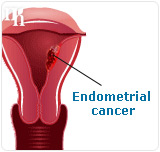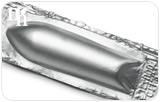During menopause, it is natural for the body to slow production of essential hormones like progesterone. Erratic progesterone levels may cause a host of side effects in women, from irregular periods and loss of libido, to osteoporosis and increased risk for endometrial cancer. Is hormone replacement therapy (HRT) the simple answer to your troubles? Read on to find out.
The Roles of Estrogen and Progesterone

While estrogen may be in the driver's seat when it comes to the female reproductive system, progesterone is certainly the number one co-pilot. That's because progesterone, known as a chemical messenger, sends vital messages to the body regarding menstruation and fertility. Every month, progesterone signals the uterus to prepare for a fertilized egg. If fertilization does not occur, progesterone signals for the uterine lining to shed, resulting in menstruation.
Because progesterone plays such a vital role in the female reproductive system, low levels of progesterone—caused by poor diet and infrequent exercise, as well as major life changes like menopause—pose serious health risks. Some symptoms of progesterone deficiency include:

- Absence of menstruation
- Loss of libido
- Mood swings
- Osteoporosis
- Increased risk of endometrial cancer
- Night sweats and hot flashes
- Breast tenderness
- Gum disease (e.g., gingivitis)
Continue reading below to learn about how HRT treats progesterone deficiency.
Decoding HRT
HRT is the process of introducing hormones from outside sources into the body to address imbalances caused by erratic hormone levels. HRT is commonly used to help alleviate the symptoms of menopause as well as to treat PMS and infertility.
There are a number of treatment options involving HRT:
- Combined HRT. Refers to more than one hormone being taken simultaneously. Progesterone and estrogen are a common combination.
- Continuous Combined HRT. Refers to taking two or more hormones simultaneously without interruption in treatment.
- Natural HRT. Refers to taking HRT from natural sources. Be wary of this label - it doesn't mean that the hormones are plant-based or that they're safe. A common source of hormones for natural HRT is the urine of pregnant mares.
- Synthetic HRT. Refers to chemically synthesized hormones. These treatments are available in a variety of forms, including creams, pills, patches, sprays, implants, and vaginal rings.
Continue reading below to learn about the side effects of HRT treatment for low progesterone.
HRT: Is it Right for Me?
Progesterone replacement therapy is often combined with estrogen replacement therapy to help balance hormone levels. While many women report positive relief from their symptoms as a result of combined HRT, you should be aware of the side effects of using them.
Short term side effects of HRT include:

- Vaginal bleeding
- Diarrhea
- Vomiting
- Heartburn
- Abdominal cramping
Long term side effects of HRT are generally more severe, and may include:
- Severe allergic reactions
- Seizures or tremors
- Yellowing of the eyes or skin
- Increased risk of breast or uterine cancer, stroke, or heart disease
It is strongly advised that you consult with your doctor about the risks of HRT.
Recommendation
Most doctors agree that women seeking relief from progesterone imbalance should make changes to lifestyle and diet before using HRT, which is both more dangerous and costly than other treatments. Click on the following link for more information about treatments for progesterone imbalance.


